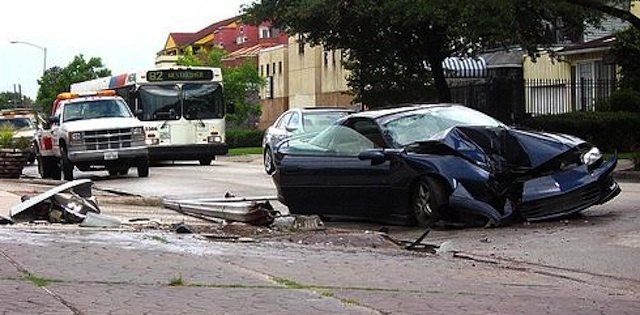Canada: Cameras Increased Accidents; Grande Prairie Wants More
Accidents increased significantly at intersections equipped with red light cameras in Grande Prairie, Canada according to a city report completed last month. The review found that after a full year of use, cameras generated $1.2 million in revenue along with a 126 percent increase in injury collisions. “Since the installation of red light cameras in Grande Prairie, the City has issued over 6000 violation tickets since the program was initiated,” red light camera Program Manager Garry Roth wrote in his report. “There have not been significant reductions in collisions, while only a few of these collisions during this time frame, have actually resulted from a red light violation.”
The program, which is run by the now-bankrupt vendor Nestor Traffic Systems, began issuing citations on June 28, 2008. The city report compiled one full year’s worth of accident data through June 28, 2009 and compared it with a five-year collision average prior to camera installation. The following chart shows the change in the number of injury accidents at each location:
LocationBeforeAfterChange100 St at 132 Ave416+300%100 St at 116 Ave7.59+20%100 St at 100 Ave410+150%100 St at 99 Ave46+50%100 St at 84 Ave3.54+14%116 St at 100 Ave36+100%108 St at 100 Ave4.518+300%Total30.569+126%These findings are consistent with independent studies conducted over the past decade that have documented significant increases in both overall and injury accidents where red light cameras are used ( view studies). Despite the dismal results in Grande Prairie, city officials insist their camera program should be expanded. The province recently authorized issuing automated speeding citations from the existing red light camera units.
“Enforcement Services has promoted red light cameras as a means to reduce collisions,” Roth wrote. “While the collision numbers have not decreased significantly since the cameras have been installed, it is still the position of Enforcement Services that enforcement through the camera technology helps promote safe driving habits.”
Only a third of citations issued by the camera program went to straight through violations. Instead, the majority of tickets were issued to drivers who made right-hand turns on red. The number of turning violations would have been higher, but several of the camera-equipped intersections had dedicated turning lanes without traffic signals.
A copy of the report is available in a 45k PDF file at the source link below.
Review of Red Light Camera Program (City of Grande Prairie, Canada, 9/21/2009)
[courtesy thenewspaper.com]
More by The Newspaper
Latest Car Reviews
Read moreLatest Product Reviews
Read moreRecent Comments
- David Murilee Martin, These Toyota Vans were absolute garbage. As the labor even basic service cost 400% as much as servicing a VW Vanagon or American minivan. A skilled Toyota tech would take about 2.5 hours just to change the air cleaner. Also they also broke often, as they overheated and warped the engine and boiled the automatic transmission...
- Marcr My wife and I mostly work from home (or use public transit), the kid is grown, and we no longer do road trips of more than 150 miles or so. Our one car mostly gets used for local errands and the occasional airport pickup. The first non-Tesla, non-Mini, non-Fiat, non-Kia/Hyundai, non-GM (I do have my biases) small fun-to-drive hatchback EV with 200+ mile range, instrument display behind the wheel where it belongs and actual knobs for oft-used functions for under $35K will get our money. What we really want is a proper 21st century equivalent of the original Honda Civic. The Volvo EX30 is close and may end up being the compromise choice.
- Mebgardner I test drove a 2023 2.5 Rav4 last year. I passed on it because it was a very noisy interior, and handled poorly on uneven pavement (filled potholes), which Tucson has many. Very little acoustic padding mean you talk loudly above 55 mph. The forums were also talking about how the roof leaks from not properly sealed roof rack holes, and door windows leaking into the lower door interior. I did not stick around to find out if all that was true. No talk about engine troubles though, this is new info to me.
- Dave Holzman '08 Civic (stick) that I bought used 1/31/12 with 35k on the clock. Now at 159k.It runs as nicely as it did when I bought it. I love the feel of the car. The most expensive replacement was the AC compressor, I think, but something to do with the AC that went at 80k and cost $1300 to replace. It's had more stuff replaced than I expected, but not enough to make me want to ditch a car that I truly enjoy driving.
- ToolGuy Let's review: I am a poor unsuccessful loser. Any car company which introduced an EV which I could afford would earn my contempt. Of course I would buy it, but I wouldn't respect them. 😉


































Comments
Join the conversation
Um, guys? I have no idea what that pic has to do with Vancouver, 'cuz that accident is in Houston. Specifically, Westheimer Road between Bagby and Helena, in the Montrose neighborhood. There are speed cameras nearby, but they don't face Westheimer traffic (they're geared toward people coming off "the spur" where it goes from 60 to 30 in a block). The accidents there happen because that road is way narrow (4 lanes squeezed into the space of 2).